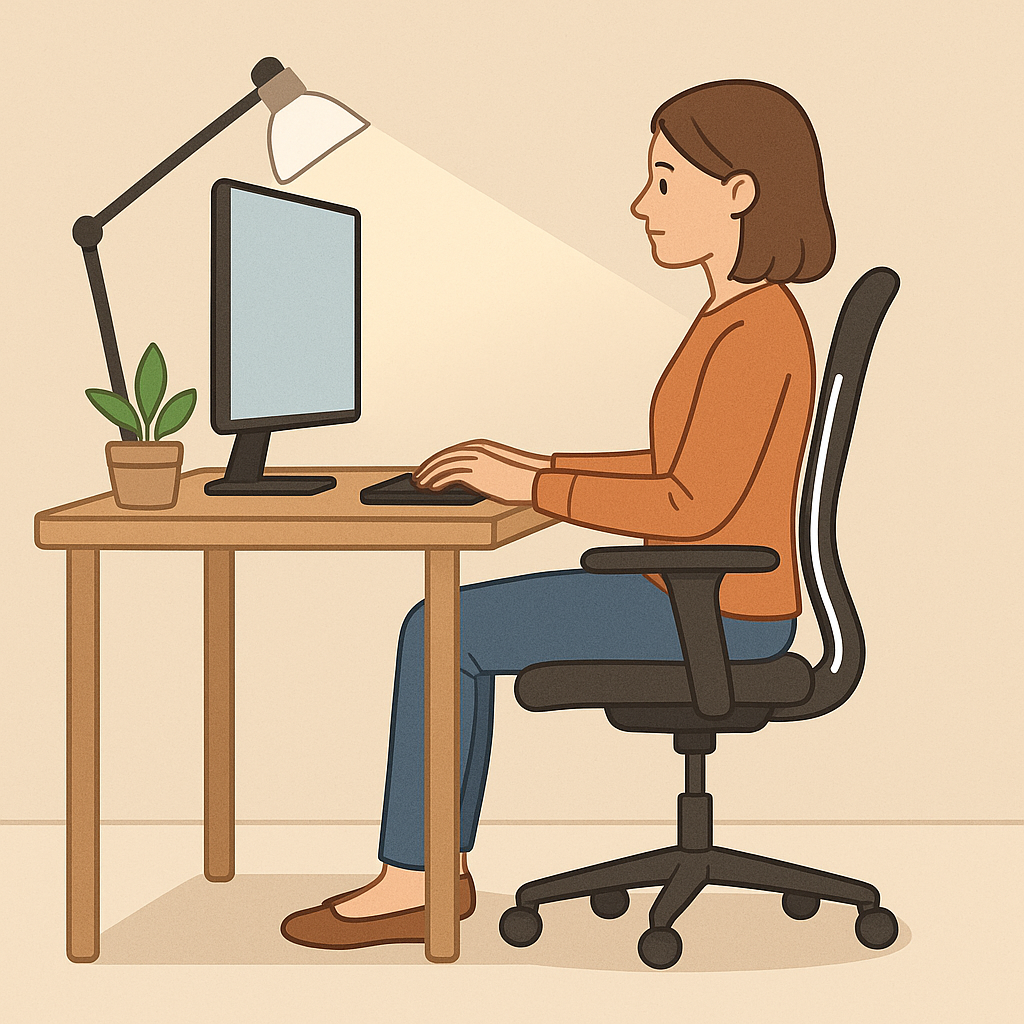Ever wonder why your neck feels like it’s been twisted into a pretzel after a day of video calls? You’re not alone. Millions of remote workers are discovering that their home office setup is slowly destroying their necks – and most don’t even realize it’s happening until the pain becomes unbearable.

The Silent Epidemic in Your Living Room
Sarah, a marketing manager from Seattle, thought she had the perfect work-from-home setup. Laptop on the dining table, comfortable chair, coffee within reach. But after three months, she couldn’t turn her head without sharp pain shooting down her shoulder. Sound familiar?
The truth is, your neck wasn’t designed for what you’re putting it through every day. While you’re focused on meeting deadlines and managing video calls, your neck is silently screaming for help.
Why Remote Work is a Neck Pain Nightmare
The Laptop Trap
Here’s what happens when you work on a laptop all day: your screen sits about 12 inches below where it should be. To see your work, you crane your neck forward and down. This position – called “forward head posture” – puts 60 pounds of pressure on your neck muscles. That’s like carrying a 7-year-old child on your shoulders all day.
The Kitchen Table Catastrophe
Most people don’t have a proper desk at home, so they work from kitchen tables, couches, or even beds. These surfaces force your body into awkward positions that your neck pays for later. Your dining chair might be perfect for a 30-minute meal, but it becomes a torture device during an 8-hour workday.
The Video Call Villain
Video calls have made neck pain worse. You’re not just looking at your screen – you’re performing for it. You unconsciously lean forward, tilt your head, and hold unnatural positions to look good on camera. After back-to-back Zoom meetings, your neck muscles are exhausted.
The Real Culprits Behind Your Pain
Text Neck Syndrome
This is when your head tilts forward to look at screens. For every inch your head moves forward, it doubles the weight your neck muscles must support. Most remote workers’ heads are 2-3 inches forward – that’s 120-180 pounds of pressure.
The Shrug Shoulders
When your workspace isn’t at the right height, you unconsciously shrug your shoulders. This creates constant tension in your neck and upper back muscles. By evening, these muscles are rock-hard and painful.
The Twisted Spine
Poor chair support forces your spine into an unnatural curve. Your neck tries to compensate by over-extending, leading to muscle strain and joint compression.
The Frozen Position
Unlike in traditional offices where you move between tasks, home workers often stay in one position for hours. This causes muscles to “freeze” in shortened positions, creating stiffness and pain.
The Current Reality: A Global Neck Crisis
Recent studies show that 75% of remote workers experience neck pain – that’s triple the rate of traditional office workers. The problem is getting worse, not better. As companies embrace permanent remote work, we’re creating a generation of people with chronic neck problems.
The numbers are staggering:
- Average remote worker looks down at their screen 5,000 times per day
- 89% work from suboptimal furniture
- Only 12% have ergonomic home office setups
- Neck pain-related doctor visits increased 200% since 2020
Future Consequences: What Happens If You Don’t Act
If you ignore your neck pain, here’s what’s coming:
Short-term (1-3 months):
- Chronic daily headaches
- Shoulder blade pain
- Difficulty sleeping
- Reduced productivity and focus
Medium-term (3-12 months):
- Pinched nerves
- Arm numbness and tingling
- Chronic tension headaches
- Jaw pain and TMJ problems
Long-term (1+ years):
- Cervical disc degeneration
- Permanent posture changes
- Chronic pain requiring medication
- Potential need for surgery
Tomorrow’s Workspace Revolution: Long-term Solutions
The 20-20-20 Rule
Every 20 minutes, look at something 20 feet away for 20 seconds. This breaks the forward head posture cycle and relaxes your neck muscles.
The Laptop Lift
Raise your laptop screen to eye level using books, boxes, or a laptop stand. Your screen’s top edge should be at or slightly below eye level. Use an external keyboard and mouse to maintain proper arm position.
The Movement Prescription
Set a timer for every 30 minutes. When it rings, stand up, roll your shoulders, and do 5 chin tucks. This simple routine prevents muscles from freezing in bad positions.
The Ergonomic Essentials

- Chair: Supports your lower back’s natural curve
- Desk height: Elbows at 90 degrees when typing
- Monitor distance: Arm’s length away
- Lighting: Bright enough to avoid leaning forward
Your Daily Neck-Saving Routine
Morning (5 minutes):
- Gentle neck circles
- Shoulder blade squeezes
- Chin tucks
Midday (3 minutes):
- Upper trap stretches
- Doorway chest stretch
- Walk around your space
Evening (10 minutes):
- Full stretch routine
- Heat therapy (warm shower or heating pad)
- Gentle self-massage
Before bed:
- Proper pillow setup
- Avoid screens for 30 minutes
- Deep breathing to relax tight muscles
The Technology That’s Changing Everything
New apps and devices are making it easier to maintain good posture:
- Posture reminder apps that alert you when you’re slouching
- Ergonomic assessment tools that analyze your workspace through your phone camera
- Smart wearables that vibrate when your posture deteriorates
- Virtual reality fitness programs designed specifically for remote workers
When to Seek Professional Help
See a physiotherapist if you experience:
- Pain lasting more than a week
- Numbness or tingling in your arms
- Headaches that worsen throughout the day
- Difficulty sleeping due to neck pain
- Sharp, shooting pains
The Bottom Line
Your neck pain after working from home isn’t inevitable – it’s preventable. The techniques in this article work because they address the root causes, not just the symptoms. Thousands of remote workers have used these exact strategies to eliminate their neck pain and boost their productivity.
The choice is yours: Continue suffering through each workday with a stiff, painful neck, or take 15 minutes tonight to start your recovery. Your future self will thank you.
Remember: Small changes today prevent big problems tomorrow. Your neck has been supporting you faithfully – now it’s time to support it back.





